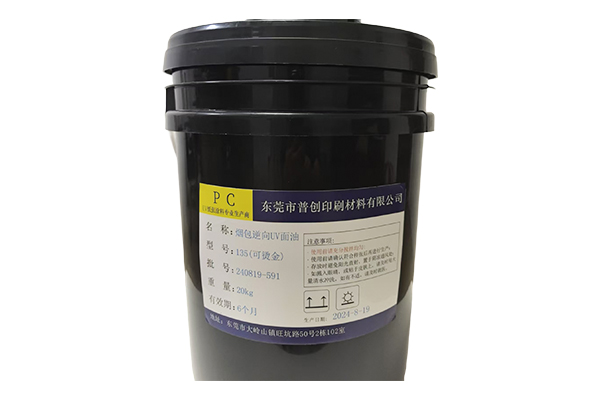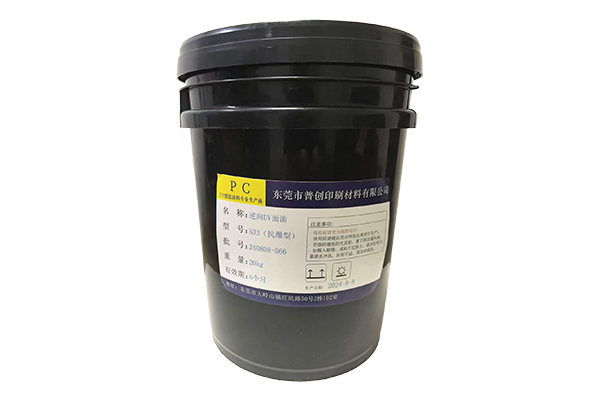How does cigarette pack reverse uv topcoat achieve local glazing?
Release Time : 2025-04-02
In the design and manufacture of cigarette boxes, the local glazing technology of cigarette pack reverse uv topcoat is undoubtedly a striking innovation. It not only enhances the visual beauty of cigarette boxes, but also demonstrates the perfect combination of technology and art through fine craftsmanship.
Cigarette pack reverse uv topcoat, also known as reverse glazing or UV local frosting effect, is the key to using UV light curing technology to achieve local high gloss and matte (frosted) effects on the surface of printed products. The core of this technology lies in the "mutual exclusion" principle of UV primer and UV topcoat. In the printing process of cigarette boxes, a layer of UV primer is first pre-coated in the area where a matte or frosted effect is required. The selection and coating of this primer are carefully designed to ensure that it can produce an ideal repulsive reaction with the subsequent UV topcoat.
Next, when the entire surface of the cigarette box or part of it is coated with UV topcoat, miracles begin to happen. When the special ingredients in the UV topcoat encounter the already dried UV basecoat, a cohesive reaction will occur, causing the topcoat to fail to completely cure in the area that contacts the basecoat, but to form a micro-particle ink film. This ink film gives the surface of the cigarette box a matte or frosted texture, which is in sharp contrast to the area without the basecoat.
In the area where the reverse UV basecoat is not applied, the UV topcoat can be cured smoothly to form a smooth high-gloss effect. This contrast between high-gloss and matte (frosted) not only enhances the visual impact of the cigarette box, but also brings a rich sense of layering in touch. This contrast effect appears simultaneously on the same printed surface, forming a distinct visual and tactile difference, making the design of the cigarette box more unique and attractive.
It is worth noting that the local glazing technology of the cigarette pack reverse uv topcoat is not achieved overnight. It requires that every step in the printing process is accurate and correct, from the application of the basecoat to the curing of the topcoat, and every link needs to be strictly controlled. In addition, factors such as the speed of the printing press, the intensity of the UV light source, and the amount of UV varnish applied will have an important impact on the final effect.
Therefore, in order to achieve the ideal cigarette pack reverse uv topcoat effect, printing manufacturers usually use advanced printing equipment and processes, and equip professional technicians for fine operations. They will conduct rigorous testing and inspection of printed products to ensure that each batch of cigarette boxes can achieve the expected visual effects and quality standards.
In general, the local glazing technology of cigarette box cigarette pack reverse uv topcoat is a complex process that combines art and technology. It not only enhances the visual effect and tactile experience of cigarette boxes, but also demonstrates the infinite possibilities of printing technology in modern packaging design. With the continuous advancement and innovation of technology, we have reason to believe that cigarette pack reverse uv topcoat will play a more important role in the future design of cigarette boxes.
Cigarette pack reverse uv topcoat, also known as reverse glazing or UV local frosting effect, is the key to using UV light curing technology to achieve local high gloss and matte (frosted) effects on the surface of printed products. The core of this technology lies in the "mutual exclusion" principle of UV primer and UV topcoat. In the printing process of cigarette boxes, a layer of UV primer is first pre-coated in the area where a matte or frosted effect is required. The selection and coating of this primer are carefully designed to ensure that it can produce an ideal repulsive reaction with the subsequent UV topcoat.
Next, when the entire surface of the cigarette box or part of it is coated with UV topcoat, miracles begin to happen. When the special ingredients in the UV topcoat encounter the already dried UV basecoat, a cohesive reaction will occur, causing the topcoat to fail to completely cure in the area that contacts the basecoat, but to form a micro-particle ink film. This ink film gives the surface of the cigarette box a matte or frosted texture, which is in sharp contrast to the area without the basecoat.
In the area where the reverse UV basecoat is not applied, the UV topcoat can be cured smoothly to form a smooth high-gloss effect. This contrast between high-gloss and matte (frosted) not only enhances the visual impact of the cigarette box, but also brings a rich sense of layering in touch. This contrast effect appears simultaneously on the same printed surface, forming a distinct visual and tactile difference, making the design of the cigarette box more unique and attractive.
It is worth noting that the local glazing technology of the cigarette pack reverse uv topcoat is not achieved overnight. It requires that every step in the printing process is accurate and correct, from the application of the basecoat to the curing of the topcoat, and every link needs to be strictly controlled. In addition, factors such as the speed of the printing press, the intensity of the UV light source, and the amount of UV varnish applied will have an important impact on the final effect.
Therefore, in order to achieve the ideal cigarette pack reverse uv topcoat effect, printing manufacturers usually use advanced printing equipment and processes, and equip professional technicians for fine operations. They will conduct rigorous testing and inspection of printed products to ensure that each batch of cigarette boxes can achieve the expected visual effects and quality standards.
In general, the local glazing technology of cigarette box cigarette pack reverse uv topcoat is a complex process that combines art and technology. It not only enhances the visual effect and tactile experience of cigarette boxes, but also demonstrates the infinite possibilities of printing technology in modern packaging design. With the continuous advancement and innovation of technology, we have reason to believe that cigarette pack reverse uv topcoat will play a more important role in the future design of cigarette boxes.






